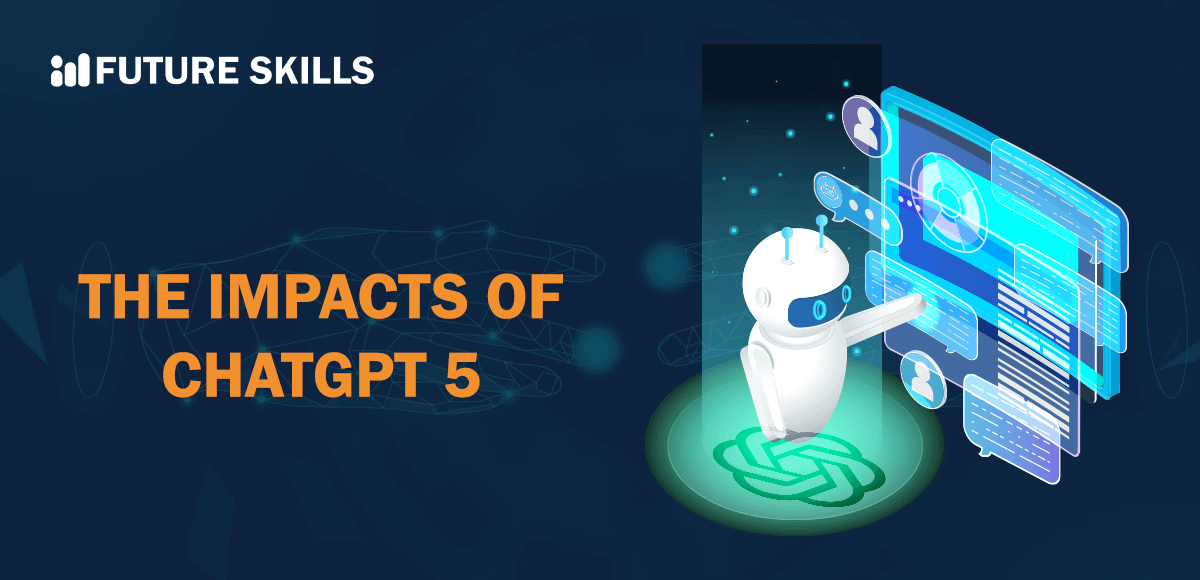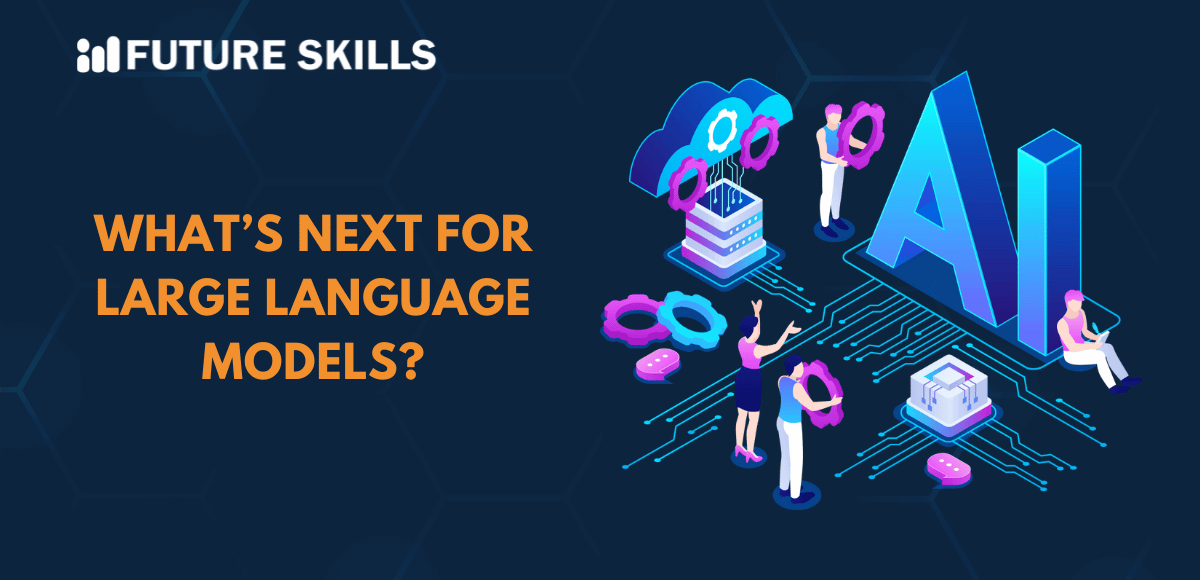OpenAI unleashed its AI chatbot ChatGPT in November 2022 and created a massive revolution in the field of generative AI. It became one of the fastest-growing apps, with 100 million users in just 5 days. Companies and individual users all over the world have been adopting the miraculous benefits of AI through ChatGPT. OpenAI introduced ChatGPT with the GPT-3.5 model, and within a few months of its launch, ChatGPT upgraded to the GPT-4 model.
Now, speculation regarding GPT 5 AI model has created curiosity about the possibilities for introduction of ChatGPT 5. Many people have pointed out that ChatGPT 5 could finally achieve artificial general intelligence. While some experts consider that the possibilities of artificial general intelligence (AGI) can be an exciting opportunity, other people perceive it as dangerous.
The expectations about impacts of ChatGPT 5 revolve around AGI and the fact that machines can achieve a similar level of understanding and freedom for expression as humans. As a matter of fact, AGI output is almost similar to human output. The discussions about potential arrival of ChatGPT 5 had started in 2023, and GPT-5 could be the next big LLM by OpenAI. Let us find out more about ChatGPT 5 and its potential impact.
Become a certified ChatGPT expert and learn how to utilize the potential of ChatGPT that will open new career paths for you. Enroll in Certified ChatGPT Professional (CCGP)™ Certification.
The Journey to GPT-5
Generative Pre-trained Transformer or GPT is one of the most popular examples of large language models or LLMs by OpenAI. It has emerged as a prominent highlight for transformation of the domain of AI and machine learning. Before learning more about the future of ChatGPT 5, it is important to understand the course of progression towards ChatGPT 5. GPT has been designed to understand and generate human-like text according to the corresponding queries. The AI models are trained using massive datasets to offer accurate responses to user queries.
OpenAI has consistently introduced enhancements in its GPT models, beginning with GPT-1. As a matter of fact, ChatGPT has played a major role in enhancing the popularity of Large Language Models or LLMs. The developments in GPT models have provided new benchmarks for possibilities in natural language processing, natural language generation, and natural language understanding. GPT-5 can serve as the next iteration in the GPT family of models.
When Will ChatGPT 5 Arrive?
It is also important to understand that OpenAI has achieved significant progress in the domain of LLMs. You might be curious about ChatGPT 5 features and its expected release date. The discussions about release date of ChatGPT 5 have been going on since the beginning of 2023. Interestingly, OpenAI introduced the recent upgrade ChatGPT-4 in March 2023, only a few months after it debuted in the mainstream market.
Some reports suggested that ChatGPT-5 might have arrived in December 2023. However, the training process of GPT-5 was not complete by December 2023. Therefore, the tentative release date of ChatGPT 5 has been estimated to be sometime in 2024. On the contrary, OpenAI has released an official statement claiming that the training process of ChatGPT 5 has not started.
Level up your ChatGPT skills and kickstart your journey towards superhuman capabilities with Free ChatGPT and AI Fundamental Course.
History of GPT Models
You can develop a better understanding of the impact of ChatGPT-5 only by exploring the roadmap of GPT models. Here is an outline of the different GPT models that have evolved over the course of time.
-
GPT-1
OpenAI introduced GPT-1 in 2018 as the first example of generative pre-training with a transformer architecture to improve natural language understanding. The model served only as a proof-of-concept and never found public release.
-
GPT-2
The insights on ChatGPT 5 capabilities also shed light on the GPT-2 model by OpenAI. It showed major improvements over GPT-1 in terms of text generation. GPT-2 could generate short text passages and was also available for public release.
-
GPT-3
The next big milestone in the evolution of GPT models was the introduction of GPT-3 in 2020. OpenAI was able to achieve significant improvements over GPT-2 with 100 times more parameters. The expansion helped GPT-3 produce longer and more coherent passages of text, thereby registering impressive performance in different tasks. However, the road to GPT 5 AI became quite clear with the introduction of GPT-3.5 in the ChatGPT free version. It showcased remarkable capabilities for generating human-like text and encouraged mainstream adoption of generative AI.
-
GPT-4
The review of the roadmap for introduction of ChatGPT 5 also requires a review of its predecessor, i.e., GPT-4. You can understand the impacts of ChatGPT 5 with better clarity by diving into the details of GPT-4. It is the latest iteration in the GPT family of models and offers better functionalities than its predecessors.
ChatGPT 4 uses a larger dataset and parameters to offer enhanced natural language generation and capabilities for understanding natural language. The GPT-4 model can offer better performance in generation of coherent, contextually relevant, and accurate text for long passages. In addition, GPT-4 also proves to be effective in terms of a better understanding of complex conversation scenarios.
ChatGPT 4 provides a glimpse of the future of ChatGPT 5 as you can expect better functionalities over GPT-4 in GPT-5. Some of the notable improvements with GPT-4 include an intricate understanding of the context and improved accuracy in text generation. In addition, GPT-4 has also enabled ChatGPT to reduce the problems of generating harmful or biased content. The adoption of ChatGPT 4 across different applications, such as content creation tools and chatbots, thereby establishing its versatility.
Level up your AI skills and embark on a journey to build a successful career in AI with our Certified AI Professional (CAIP)™ program.
What is GPT-5?
The history of GPT models shows that you can expect the GPT-5 or ChatGPT 5 model anytime in the future. However, there is no clear information about ChatGPT 5 capabilities, as OpenAI has not revealed any solid information about the new GPT iteration. It is important to note that GPT-4 introduced major improvements as compared to its predecessors, specifically in terms of features for logical reasoning. Although ChatGPT 4 does not have any knowledge of events after April 2023, GPT-4 still enjoys the benefits of an extensive general knowledge base. Therefore, ChatGPT 5 would most likely introduce advanced features that can serve better functionalities than ChatGPT 4.
The apprehension about ChatGPT 5 features has been growing stronger alongside the doubts regarding the release date of GPT-5. The discussion between Sam Altman and Bill Gates in January 2024 revealed that the work on ChatGPT 5 has already started. Most people assume that OpenAI introduced the successor of GPT-3.5 as GPT-4 in just four months. However, the training phase, development, and testing for GPT-4 took more than two years. Therefore, GPT-5 might follow a similar schedule, and it could launch by the end of 2025.
While GPT-5 is still in the pipeline, OpenAI may continue its efforts to improve GPT-4. As a matter of fact, the world may witness an intermediate update in the form of GPT-4.5, just like the GPT-3.5 before introduction of GPT-4.
Features Expected in ChatGPT 5
You can determine how ChatGPT 5 would change the world by focusing on the features that it would bring to the table. Most of the predictions related to “How does ChatGPT 5 affect the world?” are based on the current trends in generative AI. The developments by Google and open-source AI projects provide important insights regarding the future of the generative AI industry.
During his interview with Bill Gates, the CEO of OpenAI, Sam Altman, revealed some interesting features expected in ChatGPT 5. Altman emphasized how OpenAI would focus on improving reasoning abilities alongside incorporation of video processing features. Here is an outline of the features expected in ChatGPT 5 and how it can change the world.
-
More Parameters
The exact number of parameters used for GPT-4 is still a mystery for many people. Considering the benchmark of GPT-3, the number of parameters in GPT-4 might be almost 1.5 trillion. If ChatGPT 5 would follow the same pattern, then it might redefine new benchmarks for LLMs with an unprecedented size.
-
Transition from Chatbot to Agent
The impacts of ChatGPT 5 might lead to a transition of ChatGPT from a chatbot to an agent. With the introduction of GPT-5, ChatGPT can shift from chatbots to completely autonomous agents. It can help in using ChatGPT to complete repetitive jobs or tasks.
With ChatGPT 5, OpenAI can introduce more custom GPTs that can help in connecting to different services. As a result, ChatGPT 5 can help users perform different actions seamlessly on behalf of users without human intervention. For example, users can ask ChatGPT to purchase groceries for them based on unique dietary preferences.
-
More Context Windows
The introduction of GPT 5 AI also draws attention to the ways in which GPT-4 differs from GPT-3.5. You can also expect more context windows in GPT-5 than GPT-4. The size of the context window for generating responses is one of the prominent limitations of existing GPT models.
ChatGPT 5 would be trained on a larger collection of data, thereby expanding its context window. As a result, ChatGPT 5 would have a better impact on the world by understanding larger portions of text. Therefore, ChatGPT could use GPT-5 model to generate more contextually relevant and coherent outputs.
-
Cost-Effective Utilization of OpenAI API
The arrival of new models like GPT-5 would help in reducing the cost of OpenAI API. It can help ensure that GPT-3.5 and GPT-4 models become more accessible. With the arrival of ChatGPT 5, it could ensure cost-effectiveness and more accessibility of GPT-4.
The democratization of access to GPT models can open new avenues for innovation, thereby helping businesses and developers integrate advanced AI functionalities in their applications. The implications of ChatGPT 5 capabilities suggest that it can revolutionize the world by improving accessibility of GPT models. At the same time, GPT models can become more adept at performing complex tasks such as research or coding.
-
Improvement in Accuracy
The responses to “How does ChatGPT 5 affect the world?” also invite attention to the advantages of improved accuracy. You must note that the accuracy of GPT models improved continuously with every iteration. New iterations of GPT models offer better reliability in understanding context alongside ensuring generation of relevant and accurate responses.
The arrival of ChatGPT 5 implies that it would come with a bigger training dataset with more variety. GPT-4 is 40% more effective in generating accurate responses than its predecessor, GPT-3.5. Therefore, you can expect ChatGPT 5 to follow the same trend and improve fidelity of transactions while reducing errors.
Final Words
The curiosity for arrival of ChatGPT 5 has become one of the notable topics in the domain of artificial intelligence and machine learning. However, the lack of clarity regarding the future of ChatGPT 5 can be quite confusing for users and businesses. No one can predict the exact date of the release of ChatGPT 5 or the list of features it would offer. At the same time, it is reasonable to assume that GPT-5 would offer better features than its predecessors. Learn more about the predictions regarding ChatGPT 5 and how it would revolutionize the world and the future.






